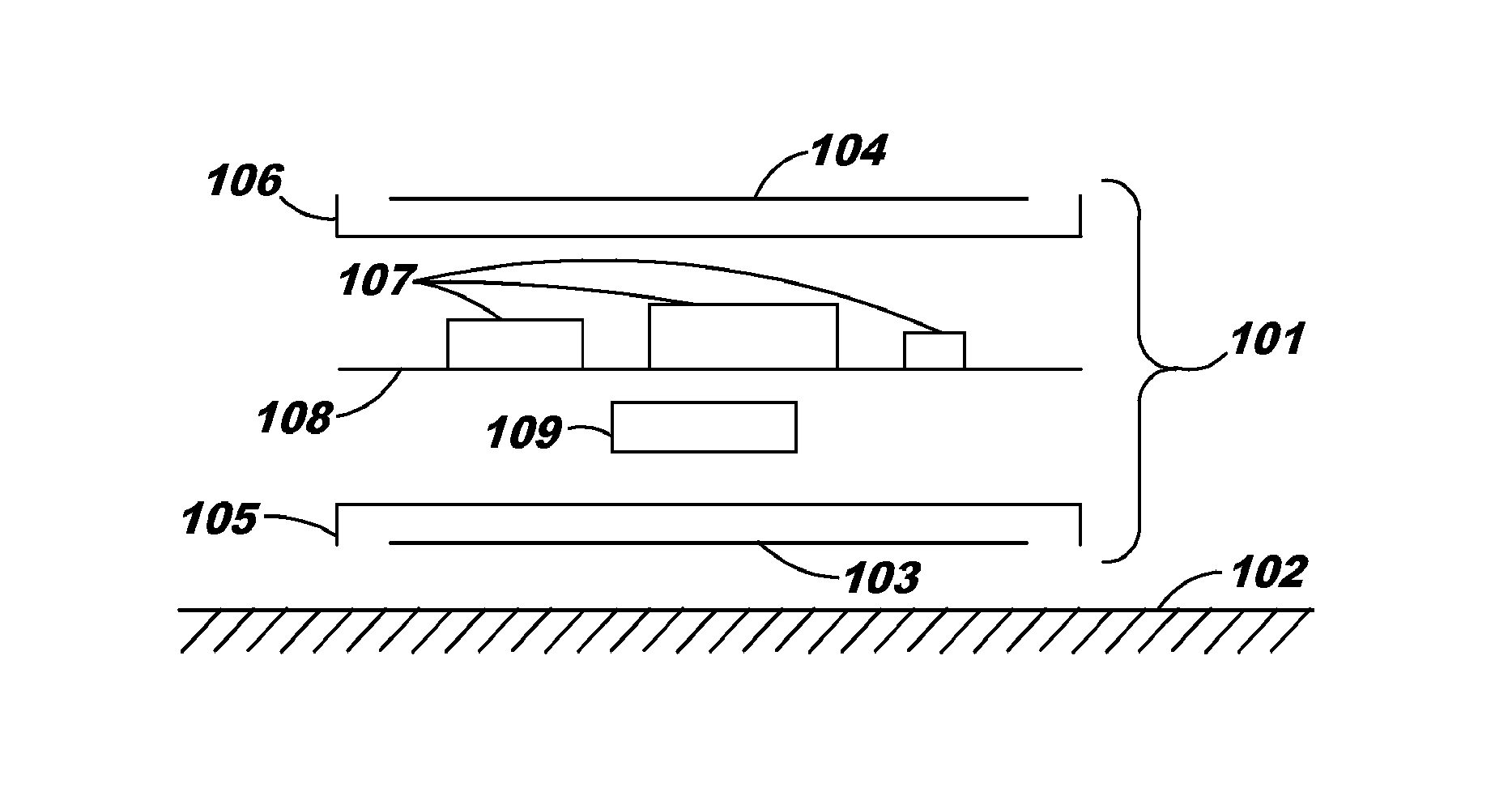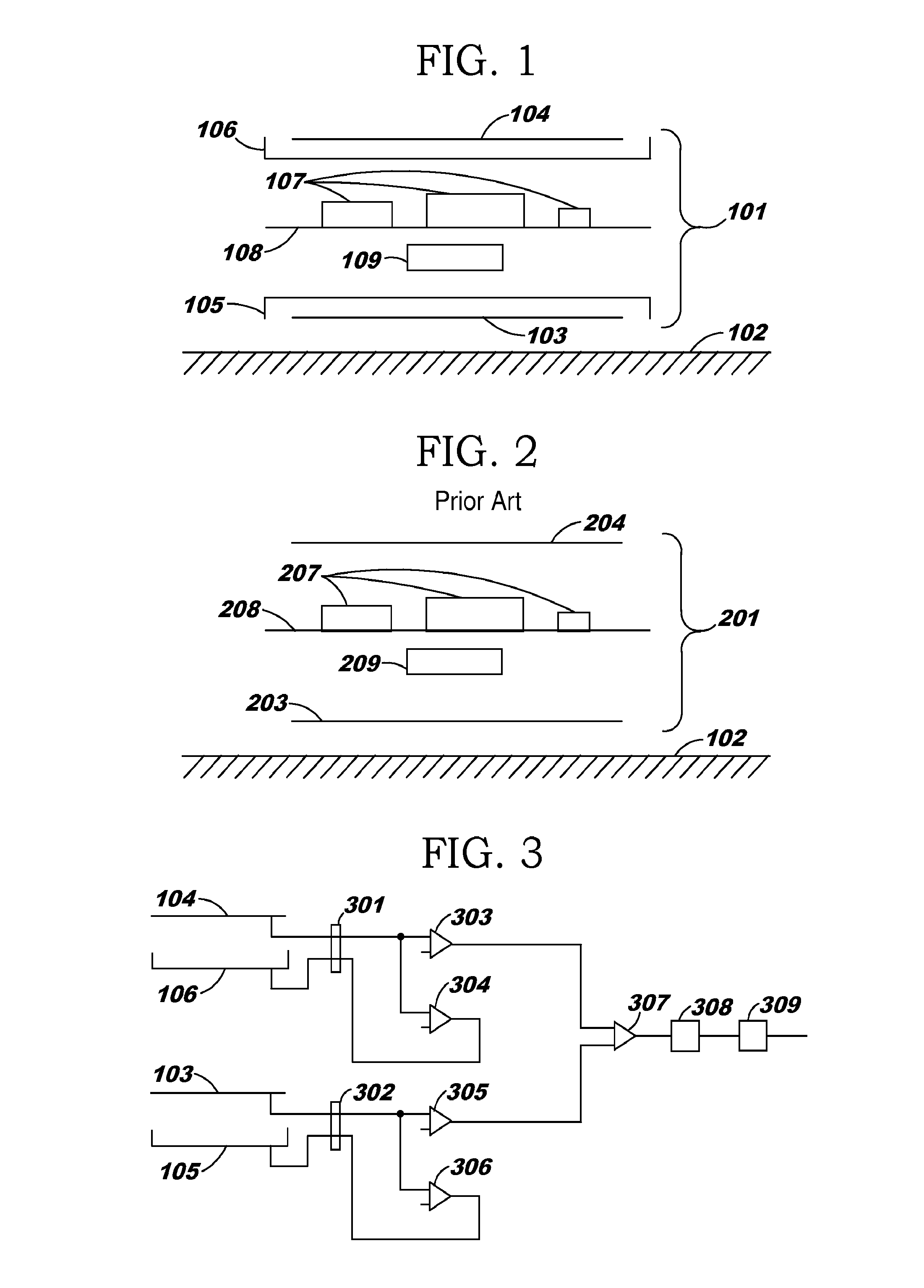Data gathering system
a data gathering and data technology, applied in the field of data gathering system, can solve the problems of difficult detection and gathering of em signals, ekg signals, conductance communications, etc., and achieve the effect of less irritating the epidermis
- Summary
- Abstract
- Description
- Claims
- Application Information
AI Technical Summary
Benefits of technology
Problems solved by technology
Method used
Image
Examples
Embodiment Construction
[0015]Turning to FIG. 1, what is shown is a sensing device 101 according to the invention in cross-sectional view. The sensing device has first and second electrodes 103 and 104. The first electrode 103 is coupled to a surface of interest 102, which might be tissue of a living subject, and the second electrode 104 is coupled to “everything else” or “the air”. Although it is largely a matter of semantics, one might choose to characterize the second electrode 104 as an electrode coupling to “ground” or “space ground”.
[0016]The first electrode 103 is shielded from the second electrode 104, and from most sources of parasitic capacitance, by a shield 105 that is driven by an active driver (omitted for clarity in FIG. 1) that drives the shield 105 to track, and ideally to match, the instantaneous potential of the electrode 103. The second electrode 104 is likewise shielded in a similar way from most sources of parasitic capacitance by a shield 106. These shields 105, 106 likewise help to ...
PUM
 Login to View More
Login to View More Abstract
Description
Claims
Application Information
 Login to View More
Login to View More - R&D
- Intellectual Property
- Life Sciences
- Materials
- Tech Scout
- Unparalleled Data Quality
- Higher Quality Content
- 60% Fewer Hallucinations
Browse by: Latest US Patents, China's latest patents, Technical Efficacy Thesaurus, Application Domain, Technology Topic, Popular Technical Reports.
© 2025 PatSnap. All rights reserved.Legal|Privacy policy|Modern Slavery Act Transparency Statement|Sitemap|About US| Contact US: help@patsnap.com


